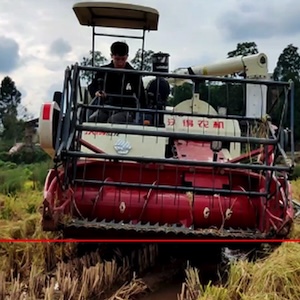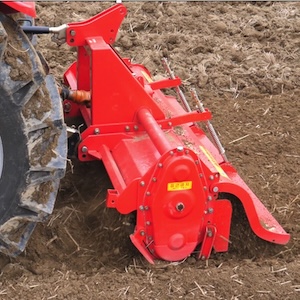Optimal tread design for agricultural lug tires determined through failure analysis

Published: 5 April 2018
Abstract Views: 1543
PDF: 687
HTML: 533
HTML: 533
Publisher's note
All claims expressed in this article are solely those of the authors and do not necessarily represent those of their affiliated organizations, or those of the publisher, the editors and the reviewers. Any product that may be evaluated in this article or claim that may be made by its manufacturer is not guaranteed or endorsed by the publisher.
All claims expressed in this article are solely those of the authors and do not necessarily represent those of their affiliated organizations, or those of the publisher, the editors and the reviewers. Any product that may be evaluated in this article or claim that may be made by its manufacturer is not guaranteed or endorsed by the publisher.
Similar Articles
- Silvana Fuina, Giuseppe C. Marano, Giuseppe Puglisi, Domenico De Tommasi, Giacomo Scarascia-Mugnozza, Thermo-mechanical response of rigid plastic laminates for greenhouse covering , Journal of Agricultural Engineering: Vol. 47 No. 3 (2016)
- Roberto Deboli, Angela Calvo, Christian Preti, Comparison between ISO 5008 and field whole body vibration tractor values , Journal of Agricultural Engineering: Vol. 43 No. 2 (2012)
- Farid Tamhidi, Morteza Almassi, Mohammad Ghahderijani, Hossein Bakhoda, Evaluating the efficiency of energy use in cultivation of medicinal plants: a case study on garden thyme and peppermint employing life cycle assessment and support vector machine modeling , Journal of Agricultural Engineering: Vol. 56 No. 1 (2025)
- Xin Zhang, Yuanyou Liu, Zhanlong Li, Zengliang Xiao, Measurement and optimization of non-linear damping systems for agricultural engineering vehicle cab , Journal of Agricultural Engineering: Vol. 55 No. 3 (2024)
- Roberto Beghi, Simone V. Marai, Valentina Giovenzana, Enrico Ferrari, Riccardo Guidetti, Testing and design of a passive container for the optimisation of highbush blueberries (Vaccinium corymbosum L.) cold chain , Journal of Agricultural Engineering: Vol. 47 No. 2 (2016)
- Ernest Ekow Abano, Hai Le Ma, Wenjuan Qu, Thin-layer catalytic far-infrared radiation drying and flavour of tomato slices , Journal of Agricultural Engineering: Vol. 45 No. 1 (2014)
- Rodolfo Piscopia, Andrea Petroselli, Salvatore Grimaldi, A software package for predicting design-flood hydrographs in small and ungauged basins , Journal of Agricultural Engineering: Vol. 46 No. 2 (2015)
- Ernest Ekow Abano, Livingston Kobina Sam-Amoah, Ato Bart-Plange, Variation in ultrasonic frequency and time as pre-treatments to air-drying of carrot , Journal of Agricultural Engineering: Vol. 43 No. 4 (2012)
- Yerong Sun, Kechuan Yi, Agricultural machinery photoelectric automatic navigation control system based on back propagation neural network , Journal of Agricultural Engineering: Vol. 54 No. 4 (2023)
- Ian Torotwa, Qishuo Ding, Emmanuel Awuah, Ruiyin He, Biomimetic tool design improves tillage efficiency, seedbed quality, and straw incorporation during rototilling in conservation farming , Journal of Agricultural Engineering: Vol. 54 No. 1 (2023)
<< < 2 3 4 5 6 7 8 9 10 11 > >>
You may also start an advanced similarity search for this article.

 https://doi.org/10.4081/jae.2018.685
https://doi.org/10.4081/jae.2018.685











